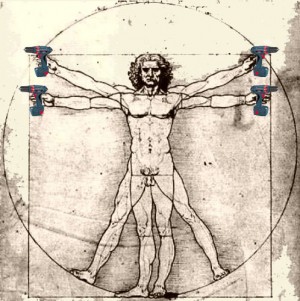If you have not read the earlier blog entry (here) on this, it might be a good idea to do that first. It gives the background to what this blog entry is all about. If you have, then you get to dive right into our students’ suggestions for improving systems building in construction. With my comments.
Guaranteed quality of procurement documents
The first group of students have talked to the municipality of Luleå and decided to address the issue of quality in documents in procurement. Their business idea is to provide a thorough review of the documents before they are put out for offering, based on experience feedback from earlier project. The key issue is what the processes are to take advantages of the experiences from earlier project.
This group, who named their company embryo STAAB, would benefit from reading literature on knowledge management. The idea of an independent company supporting the key processes is a recurring theme from the students in this course. Like for the suggestions from most student groups, apart from the issue of getting access to clients’ internal processes, developing concrete metrics of success seems to be vital. In terms of systems building, this idea would be a real improvement.
Ergonomics and time efficiency
If you merge the words Innovation and Installation, you get Innovstallation. Nice one, I like it. Kind of catchy. The second group have analysed the mounting of gypsum boards. Say 65 screws in each board, and how many boards per apartment? They’ve got a point here. In fact, they’ve got a point to the extent that the sector already has tested other methods. The technology for gluing gypsum boards is now available. Not common or even used to any major extent, just available. Not to worry though. The approach to concentrating on something very concrete and limited in scope is a good thing for a first business idea. An inspiring piece too. This idea is valid for both traditional construction and systems building.
3D models for maintenance of the home
When you buy a car, the manual is 223 pages long. When you buy an apartment, at ten times the price, you are for all practical purposes abandoned by the producer of the product. The third group addresses the poor communication between landlords and their tenants. By utilizing the opportunity for meta information in 3D-models of buildings, the HEMsidan group would produce 3D models of the home to simplify maintenance. HEMsidan would develop a portal for these models, for the clients/potential tenants.
This group brings one trend and one feature of construction to bear on their business idea. First, the increasing use of information and communication technology (in both private life and in construction). Second, the lack of services pinpointing the needs of the tenants. This idea is very relevant for systems building. It is only a matter of time before it happens.
Knowledge management and feedback
The fourth group points to the poor state of constant improvements and knowledge management in construction as their field of business. They are looking to support contractors in the experience feedback, by the use of a database of issues and the availability of statistics.
This group has understood the key to modern industrial construction; it builds on improving recurrent processes more than standardized technology. That makes this business idea feasible. The lack of drivers for handing feedback to others makes it hard. That is the knot to solve where you find business. In a project-based setting, how do you get colleagues to debrief after projects? This idea is very relevant to systems building.
Cold weather smart utility clothes
One reason for sites closing down in cold weather is workers being too cold to work safely and to make good decisions. The final group of students decided to develop smart utility clothes, because there are no clothes today that meet modern requirements of flexibility and thermal insulation. Most clothes apparently are thin and cold, or thick and hard to move in. Tricky task to pull off. Nothing in the post tells us why these students are the ones to solve this riddle but maybe, just maybe, modern materials make the time ripe for this business case. The students are juxtaposing the minor cost increase for their clothes against the costs for involuntary breaks in production due to cold weather. That’s smart. That in itself makes this idea relevant to systems building.
This concludes this year’s student contributions to systems building. It is now time for them to develop their ideas, practice their presentation skills and then defend their ideas before a jury of business people. If I were at Univeristy still, that would scare me out of my pants. But these kids normally excel in those circumstances. Bravo.


 Facebook
Facebook
10/03 2012 kl. 12:48
On March 9, the students presented their ideas to a jury. The winner was the idea to improve the mounting of gypsum boards. The students were proposed to protect their idea as soon as possible! The favourite team was the team STAAB who wants to remove ”ÄTA” or changes in building projects by drafting auditing. A personal price was given to the group HEMsidan for a selling presentation.